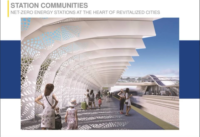Despite uncertainty about the next governor’s support and the passion of critics who want it canceled, the California High-Speed Rail Authority is carrying on for now with $3 billion worth of work on three sections. Viaducts are rising, trenches are being built, salamanders relocated.
Nonetheless, the agency is facing a self-reported cost increase, to $77.3 billion from $67 billion, plus a four-year schedule delay, to 2033.
COO Joe Hedges and Chief Deputy Director Pam Mizukami are filling in for CEO Brian Kelly, who was hired in January but took medical leave in September. Kelly had been focusing on improving project delivery. In May, he told radio station KPCC that a federal deadline to spend funds by September 2017 meant “[the authority] entered the construction contracts a little bit early. We didn’t have all of the right-of-way (ROW) in hand …And I think the biggest lesson we have is we won’t repeat that.”
That was the case for the first segment, CP1, covering 32 miles from Madera to Fresno. The section, which has passed the 50% mark, includes 33 major structures, including two trenches and three viaducts, says Steven Milton, the authority’s design and construction manager for CP1. “Crossing Road 27, we have precast prestressed concrete girders up to 198 feet long.” Crews must contend with adjacent freight railroads and often have only four-hour windows in which to place beams.
The initial ROW acquisition created “challenges on where to start work and where to get to work,” says Milton. David Vallejos, construction engineer with the joint venture of Wong and Harris, adds that the trenches in particular require utility relocations and interaction with existing irrigation canals.
However, acquisitions of some 1,900 parcels are about 95% complete, says Milton, who expects work to be at peak next summer. Vallejos adds that major environmental mitigation efforts are done, including the relocation of 200 endangered salamanders.
“The most exciting thing in the design would be our concrete staggered-arch structures over the San Joaquin River and State Highway 99,” says Milton. “These are cast-in-place structures not seen before except in coastal cities,” he says. The section is slated for a 2019 completion.
On the 65-mile CP2-3 segment, authority Project Manager Alberto Lopez says the original May 2020 completion will be pushed back, also due to challenges with ROW and the freight railroads. About 60% of 850 parcels have been acquired. Design is almost complete and “next spring we will be full bore,” he says.
The $1.3-billion effort entails 29 grade separations and 28 bridges to be built by the Dragados/Flatiron joint venture. The JV is self-producing precast beams. Regarding concrete mixes, Lopez says, “we’re trying to get the bugs worked out.”
Michael Barber, authority project manager for the 21-mile CP4 extending north, says rework on environmental permits is starting to wrap up, and some foundation work has begun. “We’re about 80% on ROW. We have enough to go to work.” Although dealing with utilities, wildlife and communities will still be challenging, most of the alignment is at grade and “we’re shooting for a late 2020 completion,” Barber says.
CHSRA reports some progress on the legal front. The authority settled a lawsuit with the town of Shafter this month, and a Superior Court judge so far has rejected another suit contending the authority isn’t spending $10 billion in bond money properly.
Pushing Awareness
About a dozen engineers and technology gurus in 2016 decided to try to counter the flurry of critical media coverage of the project. Calling themselves “Project Buccaneer,” volunteers from Autodesk, WSP and HNTB came together to create a virtual-reality experience that simulates riding on the train at 200 mph.
“It just sort of happened,” says Peter Gertler, HNTB senior vice president. Communications consultant Bart Ney and the late Doug Eberhard, Autodesk infrastructure project development director, came up with the idea together.
The “skunk works” team came out with the initial version last year. Users can walk through a train car and through various stations located in iconic California locations. They can walk through virtual parking lots and see the train flash by.
“The idea is that for people who will live along the alignment, we can communicate the experience … that it will be quieter than normal trains,” Gertler says.
After Eberhard’s sudden death last year, the group stepped up its effort, forming an alliance with the Association for California High-Speed Trains.
“We worked alongside our strategic customers completely off the books because we all believe in the program,” says Drew Olsen, senior industry strategy manager with Autodesk.
The VR experience debuted last fall at a conference held by The Self Help Counties Coalition of 24 transportation agencies delivering projects approved by sales tax measures throughout California. “There were about 200 people, and a smile on every face,” says Ney. The “California Experience” has shown at various other events since, and “we continue to refine the model,” says Gertler.






Post a comment to this article
Report Abusive Comment